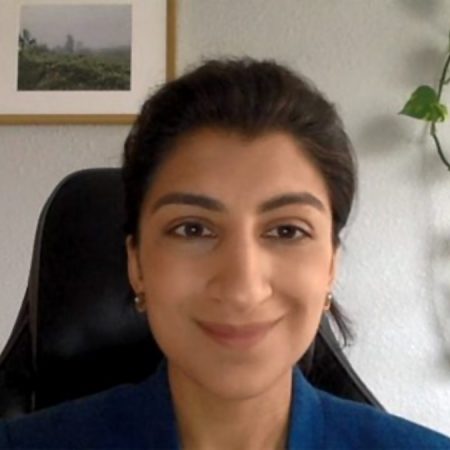Ayodhya-Verdict & Indian Secularism
By Nilofar Suhrawardy, MMNS India Correspondent
NEW DELHI: While Indians across the country are pleased that verdict of Allahabad High Court’s Lucknow bench has not repeated the riotous phase witnessed during the 1980s and 1990s, it would be wrong to claim that the controversial Ayodhya-issue stands resolved. The parties not satisfied with the verdict have the right to take their petitions to the Supreme Court. Once a petition questioning/opposing the Allahabad High Court verdict is taken up for hearing by the Supreme Court, the issue shall be viewed as unresolved till the apex court declares its stand on the same.
Besides, considering that numerous cases related to Ayodhya-issue remain pending, particularly regarding demolition of Babri Masjid on 6 December 1992, the recent verdict is linked to just one dispute over the crisis. The verdict seeks to end 60-year legal battle over which community has right to disputed land in Ayodhya. Rather than favor only one or two parties, interestingly, the verdict has stated that the disputed land should be divided among the Hindus, a Hindu sect-Nirmohi Akhara and the Sunni Waqf Board, with each having right to one-third of the disputed land. The history of this case can be traced to 1950, when two local religious leaders appealed for their right to pray at the area. Among the 17 issues raised then, one was whether the disputed site was place of Hindu deity Rama’s birth.
In its verdict, the Allahabad High Court stated that Babri Masjid was built on birthplace of Rama. The latter point has been questioned by those who have criticized the verdict. In their opinion, the bench has overlooked the fact that statue of Rama was placed in the Masjid by use of force in 1949. In addition, research conducted by scholars over historical authenticity of Ayodhya being the place of Rama’s birth has been apparently totally sidelined. Prior to demolition of Babri Masjid as Ayodhya-controversy sparked tension, Center for Historical Studies, Jawaharlal Nehru University (New Delhi) prepared a document, which brought to light several important facts. The document stated that inscriptions from 5th to 8th century BC make no reference to the place (Babri Masjid) being associated with worship of Rama. The Persian inscriptions on two sides of the mosque do not indicate that the mosque had been constructed at the site of a temple. A famous Hindu poet, Tulsidas, an inhabitant of this region, a great devotee of Rama and who lived in the same period in which the mosque was constructed makes no reference in his works of the demolition of a temple at the site of Ram Janambhoomi. There is no evidence of mosque being of much religious or cultural significance for Muslims. The epic, Ramayana which mentions Ayodhya as birthplace of Rama is largely fictional and cannot be accepted as historically authentic, without supporting evidence. The identification of Ram Janambhoomi as Ayodhya is a matter of faith and not of historical significance. The document also states that there is a contradiction in location and cultural life (judged by archaeological evidence) in the fictional Ayodhya and the real Ayodhya.
In view of deliberations being on for an out-of-court settlement of the dispute and a strong possibility of several Muslim organizations filing a petition in the Supreme Court against the Allahabad High Court verdict, clearly the Ayodhya-issue cannot yet be considered as settled. Nevertheless, peace and calm maintained throughout the country, irrespective of different reactions to the verdict, definitely stand reflective of a landmark development in the nation’s socio-political culture. In 1992, certain aggressive elements took law in their own hands by demolishing the mosque and indulging in riotous behavior. Violation and abuse of the country’s legal system and secular norms helped the saffron-brigade politically, but only for a limited period. It helped the saffron brigade’s political wing- Bharatiya Janata Party emerge as an important party at the national level. When the same party’s “secularism†was put to test to win over its “secular†allies for heading National Democratic Alliance (NDA) at the center with Atal Bihari Vajpayee as prime minister, the BJP decided to put its “Hindutva†agenda at the backburner (1998).
Ironically, the BJP has adopted a cautious approach towards commenting on the Ayodhya-verdict. The same is true of the saffron-brigade. It would be too early to assume that this reflects a major change in their communally aggressive approach on the Ayodhya-issue. Nevertheless, it cannot be missed that rather than talk of taking law in their hands they have expressed preference for using available legal options. In other words, this in itself is suggestive of their backtracking on the communal path they stepped onto 18 years ago marked by demolition of Babri Masjid and nation-wide riots targeting Muslims. Whatsoever be their reasons, political or non-political, Indian secularism has compelled them to exercise restrain on their communal designs. They have tacitly accepted that the communal moves used by them 18 years ago carry little relevance today for the Indians at large. They also apparently fear that aggressive communalism may prove damaging for their political as well as religious credentials. The very elements who vehemently waved communal banners 18 years ago have at least for now abandoned options of using that strategy. This is indeed a major step forward where Indian secularism is concerned. Thus, even though legal wrangling over Ayodhya-issue may continue for years to come, the reaction to the recent verdict is only suggestive of the communal fervor being pushed to the backburner by deep-rooted Indian secularism!
12-41













2010
1,366 views
views
0
comments